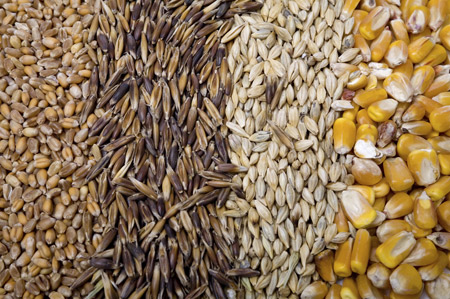FAO: Food Price Index Dips Again in April
Category: Grains
 (World Grain) – Global food commodity prices fell in April amid expectations of ongoing robust supplies of many key staples, according to the Food and Agriculture Organization of the United Nations (FAO) food price index.
(World Grain) – Global food commodity prices fell in April amid expectations of ongoing robust supplies of many key staples, according to the Food and Agriculture Organization of the United Nations (FAO) food price index.
The FAO Food Price Index averaged 168 points in April, down 1.8% from March although remaining 10% higher than a year earlier.
The FAO Vegetable Oil Price Index fell 3.9% on the month, pushed down by weakening demand for palm oil and expectations of bumper soy harvests and plantings in South and North America.
The FAO’s Food Price Index is a trade-weighted index tracking international market prices of five major food commodity groups.
The Cereal Price Index also shed 1.2% in April, pushed down by sagging wheat prices even as international rice prices firmed.
The Dairy Price Index fell 3.3% as production in the northern hemisphere entered peak season, allying short-term sourcing concern.
By contrast, the FAO Meat Price Index rose 1.7%, as pigmeat prices increased in response to strong domestic demand in the E.U. and increased sales to China.
The FAO updated its global cereal production forecasts for 2017, which now point to a likely 0.4% annual decline from 2016 even as the pace of utilization grows by around 1%.
The net result of the new projections, released today with the Cereal Supply and Demand Brief, would be a drop in the cereal stocks-to-use ratio in 2017-18 to 25.8%, still a comfortably high figure in historical terms but slightly below the current season’s level, the FAO said.
The new global cereal output forecast was raised from the April figures, as Brazil appears poised to enjoy stronger-than-expected maize yields, lifting the global output for that crop to 1.054 billion tonnes, the FAO said. Projected global rice output remained stable at 506 million tonnes, while the forecast for wheat — 740 million tonnes — was also unchanged as expected smaller crops in Australia, Canada, Russia and the United States are offset by likely expansions in the E.U., India and Morocco.
On the consumption side in 2017-18, abundant maize and other coarse grains are expected to push up use for livestock in China and South America, while rice utilization is expected to grow 1.2% due to expanding food intake.
Global inventories by the end of seasons in 2018 are forecast, as a result, to nearly match the levels at the opening of the year, although their composition is seen changing somewhat, the FAO said. Wheat stocks are set to expand by 3.3% to reach a new high of 247.6 million tonnes, driven mostly by China, which, on the other hand, is drawing down its accumulated coarse grain reserves by almost 20.5 million tonnes.




